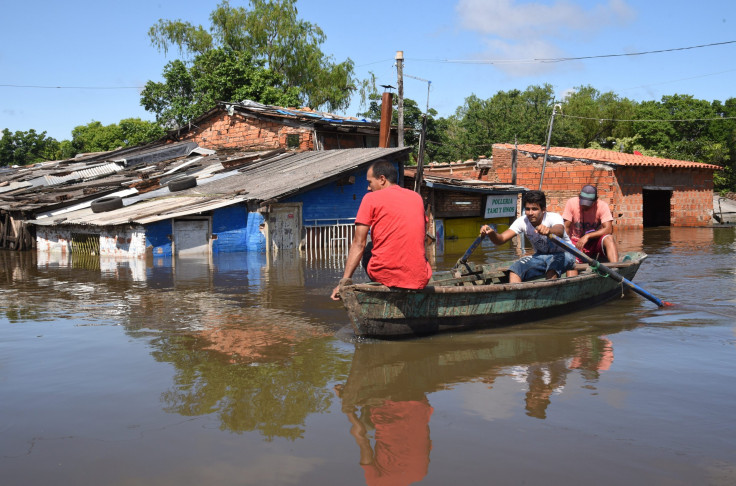More Than 100,000 Flee Flooding In Paraguay, Argentina, Brazil, Uruguay

More than 100,000 people have had to evacuate their homes in the four-nation border areas of Paraguay, Uruguay, Brazil and Argentina due to severe flooding in the wake of heavy summer rains brought on by El Niño, authorities said Saturday.
In the worst-affected country, Paraguay, around 90,000 people in the area around the capital city of Asunción have been evacuated, the municipal emergency office said. Many are poor families living in precarious housing along the banks of the River Paraguay.
The Paraguayan government has declared a state of emergency in Asunción and seven regions of the country to free up funds to help those affected. Several people have been killed by trees falling in the storms that caused the flooding, local media reported. There was no official death toll yet.
In Alberdi, some 120 km (75 miles) south of Asunción, the government recommended that 7,000 more families living along the banks of the River Paraguay evacuate.
More than 9,000 people in Uruguay also had to flee their homes, according to the national emergency office, which added that it expected water levels to remain at their current level for several days before subsiding.
"The flooding is caused by the El Niño weather phenomenon," Uruguay Emergency Office Chief Fernando Traversa said. "We knew it would have its strongest impact towards the end of spring, start of summer ... but we could not know how much."
This year's El Niño, which sparks global climate extremes, is the worst in more than 15 years, the U.N. 's World Meteorological Organization said last month.
"Severe droughts and devastating flooding being experienced throughout the tropics and subtropical zones bear the hallmarks of this El Niño, which is the strongest in more than 15 years," WMO chief Michel Jarraud said in a statement.
In northern Argentina, around 20,000 people have had to abandon their homes, the government said Saturday.
"We are going to have a few complicated months; the consequences will be serious," said Ricardo Colombi, governor of Corrientes province, after flying over the worst-affected areas with national Cabinet Chief Marcos Peña.
Peña said national government aid was already on its way, and the new president, Mauricio Macri, who took office this month, intended to make improving infrastructure a priority so that such flooding did not occur again.
"Argentina has a very big lack of infrastructure," he said.
At least four people have died in Argentina and Uruguay due to the storms and floods, according to local media reports. One was reported to have drowned, while another was electrocuted by a fallen power cable.
Brazilian President Dilma Rousseff also flew over the flooded areas on the border with Argentina and Uruguay Saturday morning. Rio Grande do Sul state civil defense said 1,795 people were left homeless there after 38 towns were affected by heavy rains.
© Copyright Thomson Reuters {{Year}}. All rights reserved.





















